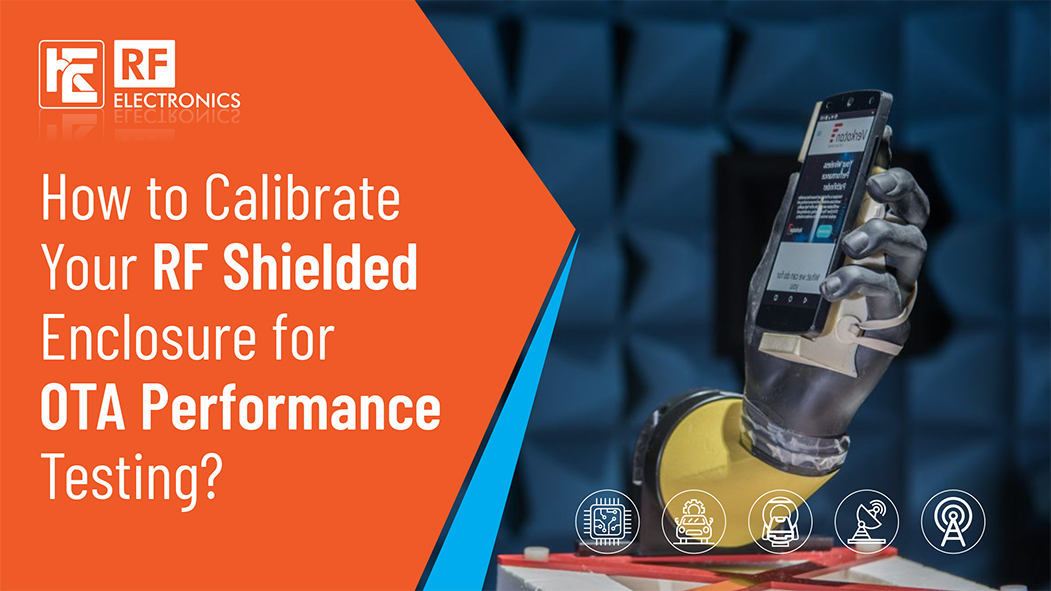Sep 09, 2025

Radio frequency (RF) shielded enclosures are critical tools in modern electronics testing. They isolate devices from outside electromagnetic interference (EMI), ensuring tests yield reliable results. When paired with artificial intelligence (AI), these enclosures enable smarter, faster, and more accurate testing. Let’s explore how AI reshapes testing in RF-shielded environments.
RF-shielded boxes and chambers block EMI so engineers can test wireless devices—Wi-Fi, Bluetooth, 5G, mmWave—cleanly. Enclosures such as bench-top boxes (e.g., HDRF-251810-A) are compact and portable, while rack-mount versions (e.g., HDRF-1160-AI, HDRF-1560-AI) integrate into lab systems. These come with absorptive foam, filtered power, and connectors to prevent signal leakage up to 12 GHz.
Shielded enclosures are used in EMC (electromagnetic compatibility), OTA (over-the-air), MIMO, GPS, IoT, medical, automotive, and defence testing. For example, EV charging stations rely on shielded boxes during EMC compliance checks before deployment.
AI brings two strong benefits:
1. Smart anomaly detection
2. Test automation and speed
1. Smart anomaly detection
Traditional testing involves manual review of signal data or visual test patterns. AI can process complex datasets—signal strength, phase, thermal maps—and learn patterns that indicate faults or interference. Research on antenna thermal images using encoder-decoder AI showed up to 46% improvement in fault detection accuracy.
In RF-shielded boxes, AI can monitor signal integrity during OTA or EMC runs and flag anomalies automatically. This reduces missed failures and false alarms, accelerating development cycles.
2. Faster, smarter automated testing
AI models can steer test sequences adaptively. If a certain frequency shows interference, the system can dive deeper automatically. Shielded enclosures often include turn-tables for rotating devices during OTA to capture directional radiation patterns. AI can control these rotations, determine angles, frequencies, and repetitions, making testing more thorough.
Combining AI with powerful hardware that already provides measured isolation—from 130 dB at 20 MHz to 100 dB at 12 GHz—ensures tests run with precision and reliability.
Real-World Examples and Benefits
Faster development cycles
AI can reduce human review time by flagging faulty test runs. Engineers spend less time sorting data and more time fixing issues. With AI-guided OTA sequences (rotation, angle, frequency), tests adapt in real time to cover critical cases.
Greater accuracy in fault detection
AI models trained on large signal datasets can spot subtle EMI patterns or drifting parameters. Studies show AI fault detection can improve performance metrics significantly—encoder-decoder thermal image work showed roughly 46% better F-measure than traditional baselines.
Scalable to new technologies
Shield boxes already support frequencies up to mmWave, and AI can easily be re-trained for new standards—Wi-Fi 6E/7, V2X, C-V2X, 77 GHz radar. As wireless tech evolves, AI-assisted testing in shielded enclosures keeps labs ready.
Repeatable and reliable compliance testing
AI ensures testing is consistent every run. No fatigue, no oversight. For EMC certification, this repeatability reduces re-testing and speeds approvals. With tested isolation (e.g., = 130 dB at 20 MHz), engineers get high confidence in measurements.
1. Choose the right enclosure.
Select a box or chamber—bench-top, rack-mount, standalone, or with turn-table—that fits device size and frequencies (Bluetooth to mmWave).
2. Integrate connectors, filters, antennas.
Foam absorbers, filtered power inputs, and coaxial ports help maintain tight shielding while supporting external signals.
3. Feed signal and sensor data into AI.
Connect RF test equipment and optionally thermal or vibration sensors. Gather phase, amplitude, and thermal data for training.
4. Seal and calibrate environment.
Shielded boxes offer known isolation specs up to 12 GHz. Calibrate test gear inside the sealed box for consistent input.
5. Let AI guide the test.
Use smart scripts to rotate devices, update frequency points, split OTA runs. AI decides next steps based on data.
6. Report and iterate.
Let AI flag anomalies. Engineers review flagged runs, tweak model or hardware, and re-test efficiently.
RF-shielded enclosures offer the physical foundation—high isolation across wide frequency ranges and flexible integration options. Adding AI brings visibility, speed, and adaptive testing power: it tells you where to look, when to dig deeper, and what matters most. By pairing these together, test teams meet the demands of complex wireless systems faster, smarter, and with higher confidence.
Next Blog

How to Calibrate Your RF Shielded Enclosure for OTA Performance Testing?
Learn More